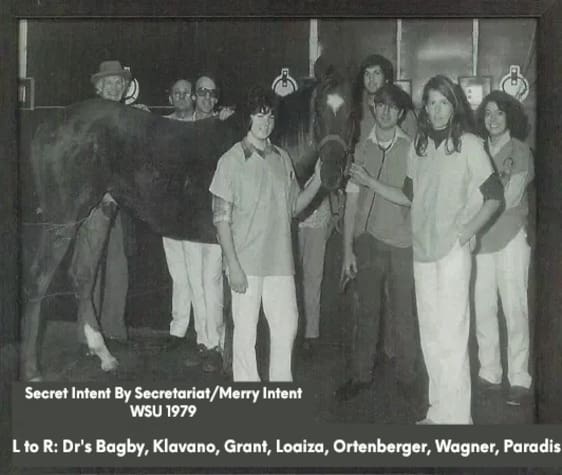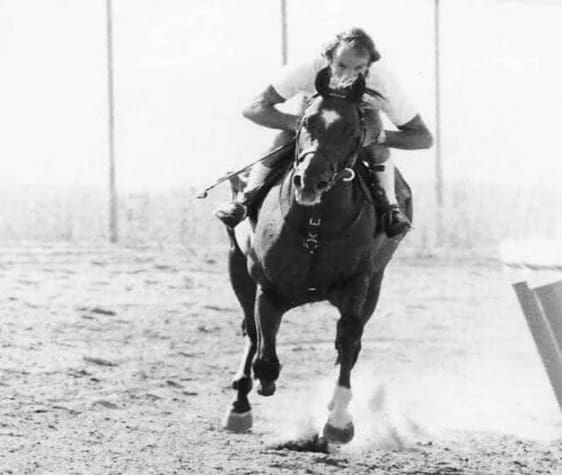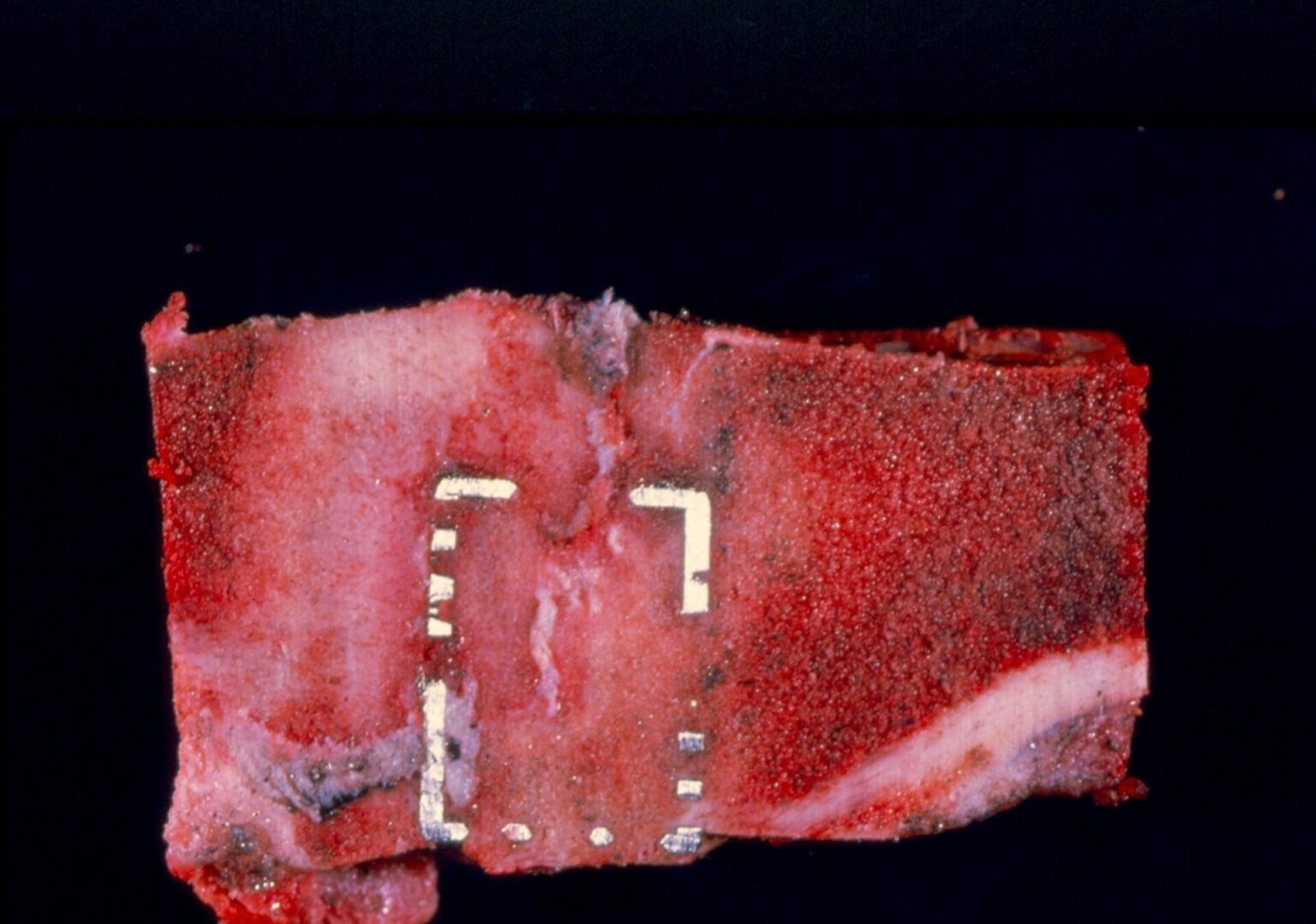Expert Spinal Cord Surgical and Medical Treatments to Improve the Well-being of Horses
Equine Wobbler Syndrome (Wobbles)
Is Your Horse a Wobbler? Signs & Symptoms of Equine Wobbler's Syndrome
"Your horse may be a Wobbler" is a statement made by the attending veterinarian that very few horse owners want to hear. An "Equine Wobbler" diagnosis produces the same fear of the unknown that the dreaded diseases "colic," "founder," and "laminitis" are capable of producing.
This web site can assist you in answering your questions about Equine Wobbler Syndrome "wobbles" resulting from compression of the cervical spinal cord. It will give you an understanding of the clinical signs, diagnostic tests, and possible successful treatment and prevention of the "Wobbler" syndrome. You will be able to make an informed decision for your horse's future. Even the great Seattle Slew, at 26 years of age, received a titanium implant and was able to breed 60 mares at the age of 27.
An "Equine Wobbler" is a horse with a damaged spinal cord. Your horse may be a wobbler if you see one or more of the following signs: Has your horse been stumbling or stumbling more often under saddle? Have you seen any abnormal wear on the front toes? Are there any unusual sores on the front heels from overreaching? Do you notice any excessive movement of the tail when trotting? Does your horse bunny hop when cantering in the pasture? Is there any excessive knuckling of the hind legs when stopping? When going uphill, is there any outward rotation of hind toes? Does your horse have hypermetric front legs when the head is elevated?
The most obvious clinical sign is an abnormal gait characterized by wobbling or a horse that looks like he's had a fair amount of tranquilizers. Mild cases may only present an inability to change leads, stop smoothly, or a negative change in behavior that results in poor performance. The mild cases are often confused with subtle problems of the hind legs, especially of the hock and stifle. The hind limbs are affected because the nerves that supply the area are located on the outside of the spinal cord in the cervical (neck) area and, therefore, are more easily damaged than nerves leading to the front limbs, which are protected deep within the spinal cord. Has your horse recently flipped over backward? Does your veterinarian suspect a cervical spine fracture? Severe damage can actually result in a horse that may fall and have difficulty getting up.
The major causes of spinal cord damage include malformation of the cervical vertebra, trauma to the vertebra from falling, viral (herpes or rhinopneumonitis), and protozoa (Sarcocystis neurona) infections commonly called EPM. The clinical signs of each of these problems can be very similar as each one can damage the spinal cord in the neck region.
In order to provide accurate information for the treatment and long-term prognosis, it is necessary to obtain a complete diagnosis as soon as possible. Arriving at a clinical diagnosis usually requires combining the information from a complete neurological exam, radiographs of the skull and cervical area, a myelogram, and spinal fluid testing for inflammation and EPM.

You will learn the steps that you & your veterinarian can use to diagnose a horse as a wobbler with neurological deficits versus a lameness. What is surgery all about, and could it be an option for you and your horse? What is the prognosis of your horse with and without surgery?
I hope this information answers those questions you have and can open a dialog between you and your regular veterinarian.
I enjoy working with your veterinarian to help with the clinical diagnosis and treatment of your horse. If you think your horse may be a wobbler, have questions, or would like to contact Dr. Barrie Grant concerning surgery:
Email Dr. Grant at: barriegrant@equinewobblers.com
For US and International veterinarians who have worked with Dr. Grant, click on their name below:
-
Dr. John Walmsley(Retired)




